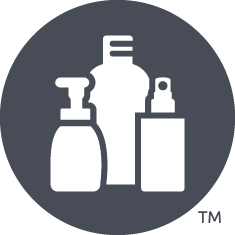Your cheat sheet to creating a FDA approved food jar label


Your grandma has never been more proud of you. Your neighbors love it. Complete strangers are betting you could strike it rich with this. Whoa, hold your horses! Bureaucratic red tape must be managed before any food product can hit the shelves. Learn the ins and outs of creating an FDA approved label for your food jars.
The General's Requirements
There isn't an actual General. That title just sounded more captivating than a standard general requirements heading. I guess in a way the FDA is the General in this scenario as they are the governing body that, for the safety of all consumers, requires food jars to be decked out in product details (for high acid foods that is, egg and meat-based products have to undergo a different approval process through the USDA). The general requirements for a food jar label include:
- Principal Display Panel
- Information Panel
- Nutrition Label
Principal Display Panel
Statement of Identity. This is a fancy way of saying the name of the food. Common everyday terms must be used in this declaration. Say you are marketing a fresh tomato-based sauce enlivened with onions, peppers and a wide variety of spices in a food jar. In this case you would just call it a salsa. This name must also be of a certain size, prominent enough on the label to be noticed. Any modifications of the product, whether it be sliced or diced need to be described on the principle display panel as well.
Net Quantity Statements. No tricks here, this statement needs to describe how much of the product is in the food jar. The amount listed must be given in U.S. and Metric measures. This declaration should be placed on the bottom portion of the PDP (principal display panel).
Information Panel
Ingredients List. Did you know that the first ingredient listed on the ingredients panel is the most heavily used ingredient in the product? You learn something new every day, huh? Follow suit and list all the ingredients in your food jar in descending order by weight.
Food Allergens. There are eight major food allergens that must be listed on a food jar's information panel. They are: milk, eggs, fish, crustacean shellfish, tree nuts, wheat, peanuts and soybeans.
Nutrition Label
The components that you're accustomed to seeing on food jars are exactly what you're expected to provide for your product. See the bullet points:
- Total Calories
- Calories from fat, Saturated fat
- Total fat, Saturated fat
- Trans fat
- Polyunsaturated fat
- Monounsaturated fat
- Cholesterol
- Sodium
- Potassium
- Total carbohydrate
- Dietary fiber (soluble, insoluble)
- Sugars, sugar alcohols
It takes a lot of information to put together an appropriate label for a food jar. Being anxious and excited to get the final product to consumer is understandable. But it's important to maintain transparency, not only for the sake of consumers but also for the protection of your food company. Embrace the FDA guidelines for the overall success of your food jar product.
Do you need food jars or assistance in creating a label? Check out the FDA's Food Labeling Guide and talk to one of our Agents about labels.
